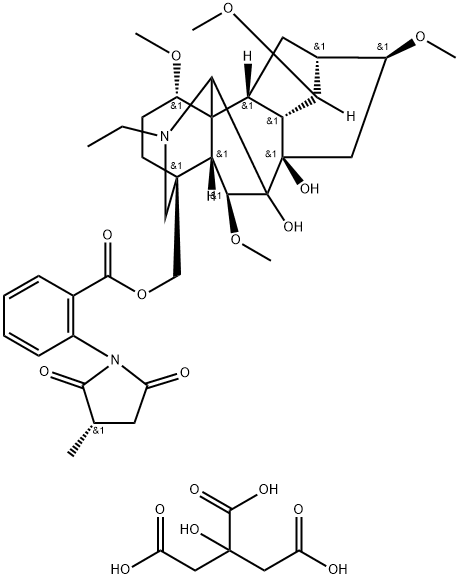351344-10-0
 351344-10-0 結(jié)構(gòu)式
351344-10-0 結(jié)構(gòu)式
常見(jiàn)問(wèn)題列表
α7nAChR
Pretreatment with 5 and 10 μM Methyllycaconitine citrate (MLA) inhibits the decreased cell viability induced by Aβ 25-35 . Cell viability does not decrease after exposure to Methyllycaconitine citrate (2.5, 5, 10, 20 μM). Aβ 25-35 treatment increases LC3-II levels, which is inhibited by administration of Methyllycaconitine citrate. Methyllycaconitine citrate also inhibits Aβ-induced autophagosome accumulation in SH-SY5Y cells. Flow cytometry also demonstrates decreased MDC-labeled vacuoles with Methyllycaconitine citrate treatment.
Methyllycaconitine citrate (MLA) (6 mg/kg) given alone intraperitoneally does not cause climbing behavior when compare with the saline group. Pretreatment with Methyllycaconitine citrate significantly inhibits methamphetamine (METH)-induced climbing behavior, by about 50%. Methyllycaconitine citrate does not modify either basal locomotor activity or METH-induced hyperlocomotion. The METH-induced depletion of dopamine neuron terminals is attenuated in mice pretreated with Methyllycaconitine citrate (250±43 fmol/mg, n=7). A direct effect of Methyllycaconitine citrate on body temperature is ruled out because Methyllycaconitine citrate does not affect basal body temperature (37.0±0.5°C, n=5) or reduce the METH-induced hyperthermia (38.2±0.4°C, n=6, MLA+METH group, n.s. versus METH group).